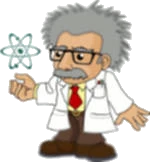The cube
The cube has an edge of 12 dm. The second cube has an edge exactly 20% longer. How much % more water is in the second cube than in the first cube if the first cube is full to 3/4 and the second to 3/8?
Correct answer:

Tips for related online calculators
Need help calculating sum, simplifying, or multiplying fractions? Try our fraction calculator.
Our percentage calculator will help you quickly and easily solve a variety of common percentage-related problems.
Our percentage calculator will help you quickly and easily solve a variety of common percentage-related problems.
You need to know the following knowledge to solve this word math problem:
Related math problems and questions:
- Three-quarters 37241
 We have two cube-shaped tanks. The first has an edge of 12 dm long, and the second has an edge of 20% longer. By what % more or less water is there in the second tank if the first is three-quarters full and the second three-eighths full?
We have two cube-shaped tanks. The first has an edge of 12 dm long, and the second has an edge of 20% longer. By what % more or less water is there in the second tank if the first is three-quarters full and the second three-eighths full? - Cubes - diff
 The second cube's edge is 2 cm longer than the edge of the first cube. Volume difference blocks are 728 cm³. Calculate the sizes of the edges of the two dice.
The second cube's edge is 2 cm longer than the edge of the first cube. Volume difference blocks are 728 cm³. Calculate the sizes of the edges of the two dice. - Concentric circles 4
 One circle has a radius of 98 cm, and a second concentric circle has a 1m 26 cm radius. How much longer is the circumference of the second circle than that of the first?
One circle has a radius of 98 cm, and a second concentric circle has a 1m 26 cm radius. How much longer is the circumference of the second circle than that of the first? - Container
 On the first day, I removed 1/4 of the water from the full container, and on the second day, I removed 1/5 of the remaining water. Thus, how many percent remain container-filled?
On the first day, I removed 1/4 of the water from the full container, and on the second day, I removed 1/5 of the remaining water. Thus, how many percent remain container-filled?
- Two cubes
 The surfaces of two cubes, one of which has an edge of 22 cm longer than the second, differ by 19272 cm². Calculate the edge length of both cubes.
The surfaces of two cubes, one of which has an edge of 22 cm longer than the second, differ by 19272 cm². Calculate the edge length of both cubes. - Dimensions 16573
 They drained the water from the full tank through three holes. 1/6 of the tank volume flowed through the first hole, 2/5 of the volume through the second hole, and 1/4 of the volume through the third hole. The tank has the shape of a cuboid with dimension
They drained the water from the full tank through three holes. 1/6 of the tank volume flowed through the first hole, 2/5 of the volume through the second hole, and 1/4 of the volume through the third hole. The tank has the shape of a cuboid with dimension - Traveled 7541
 The tourist covered 47 km in three days. The first day ran 20 percent more than the second day, and the third day was 4 km less than the second day. How many km has he traveled each day?
The tourist covered 47 km in three days. The first day ran 20 percent more than the second day, and the third day was 4 km less than the second day. How many km has he traveled each day?
